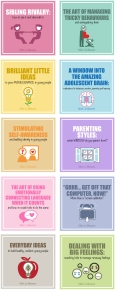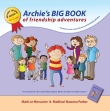Teaching Tough Kids
Chapter 2
A Restorative SpiritSkilling kids to listen, discuss and repair relationships
Make no mistake; there is a link between school discipline and criminal justice
The light of hope
Description: the Restorative spirit
Control
- Lessons to be learned from the Social Control Window
- Case study, Big John
- Case study, Matt
The Restorative spirit: a practical start
- A little theory behind the Restorative questions
- The Restorative questions, the script
- The Restorative questions, in summary
- Affective Statements
- Affective Interactions
- Case study, "Hawthorn supporters are losers"
- Impromptu Restorative conferences
- In a rush, a powerful professional learning tool
- In a rush, the role play
- Large group Restorative conferences
- Case Study, "My stuff's been stolen!"
- Formal Restorative conferences
- Formal Restorative questions
A Restorative Spirit Kids today are socially savvy. They demand the 'human stuff' from teachers and peers, and sometimes to get it, they'll push buttons to capture the full range of human emotion. This is particularly so for students whose social bonds with teachers and peers are weak or strained, and lack a sense of belonging. When things go wrong, attempts by teachers to suppress emotions and to discipline these kids in cold, clinical, disconnected ways can make things a lot worse. These kids need colour and life in their dealings with teachers and with each other. They need real interactions, where everyone receives a hearing and is given the opportunity to take responsibility, to plan with others and to make bad situations better. Kids nowadays will not stand to be treated as mere organisms to be manipulated through excessive behaviouristic approaches. Their response tells us this.
We need to read the signs, and draw on the moments stored in our memory that reassure us our best work is done inside relationships with kids, and nowhere else. Relationships in schools have never been so important. We now know as well as setting the scene for better learning, good relationships also act as a protective factor against school violence (Morrison 2007).
The light of hope
In recent times progressive educators, particularly those working with complex students, have responded to the evidence that punishment as a principal means to control the behaviours of students does not stop the recurrence of anti-social behaviours (Sugai & Horner, 1999). What the over use of punishment does is to train students to self protect at all cost by blaming, lying, minimising and disregarding the impact of their behaviour on others. We also know that continued exposure to harsh disciplinary regimes such as zero tolerance, can provoke oppositional behaviours, hatred and mental health issues in young developing human beings, as well as placing them at greater risk of entering the criminal justice system (Morrison, 2007). The realisation has emerged for some of us who work with kids that even young children are capable of owning their conflicts, identifying their needs and coming up with solutions when given guidance to do so. A simple discussion between kids about the harm caused can often do away with the need for punishment because nothing is as effective as those involved in the conflict wanting to put things right. And, the healthy bonus delivered to kids in such circumstances, are the priceless opportunities for them to see and hear the impact of their mistake, to learn how to forgive, accept forgiveness and recover from a mistake.
The light of hope is an emerging understanding that punishment does not fix up the inevitable problematic behaviours influenced by deficits, delays, disorders, disabilities, syndromes, neglect or abuse in children and teens. Nor will it fix-up or prevent bouts of healthy exuberance and impulsivity from students who get caught up in the moment.
Description, the Restorative spirit
Restorative practice is a constructive learning-based process that distinguishes between managing behaviour and managing relationships. Based on the principles of Restorative Justice, Restorative practices assume that the best way to deal with a problem is to teach individuals how to discuss, listen, share and exchange ideas about it.
The Restorative spirit rejects poor behaviour, but endeavours to understand it, repair the problem and find agreement on what needs to happen to make things better. The needs of those who have been harmed are central in these decisions. Those who have caused harm are enabled to make amends and find a way to continue their positive engagement in school life (Moxon, Scudder and Peters, 2006). The Restorative message to those who have behaved inappropriately is, "You're okay, but that behaviour isn't". This is a world apart from the traditional disciplinary message, "You've acted badly, so now you will be treated like a bad person". Mistakes and wrongdoing are seen through the lens of how it affects others, and consequences always focus on what needs to happen to mend the harm caused. Those who have caused a problem are encouraged to show care and take responsibility. As well, the group (including the teacher) commits to re-accepting the wrongdoer once they have acted to right their wrongs.
In practice, an entire class or group of students may be found sitting in a circle arrangement discussing a particular issue at hand. Class meetings or group circles bring students face-to-face to clarify what happened and how others have been affected. Consequences do not come any more real than hearing first-hand from those who have been hurt or upset by a behaviour. The Restorative approach invites students to accept responsibility for their behaviour despite facing adversity. Firstly, kids are engaged in a dialogue concerning how their behaviour affected others and impacted on their rights. Secondly, with guidance and structure, we ask them to take an active role to put things right again. We immerse them in talking and listening to others - hearing first hand the impact the behaviour had, whether this be from a peer they have bullied or from a teacher whose class they have continually disrupted. What arises from discussion is a sense that we care for them and want to maintain engagement and relationship.
What is emerging from the Restorative process is an irresistible sense of fairness from all involved.
There is now abundant growing empirical data to show Restorative practice, with its spotlight fixed on rights and relationships, fair process, and a clear focus on relationship building and healing, actually invites growth in student behaviour and wellbeing...
Plus single $20 postage and handling fee












